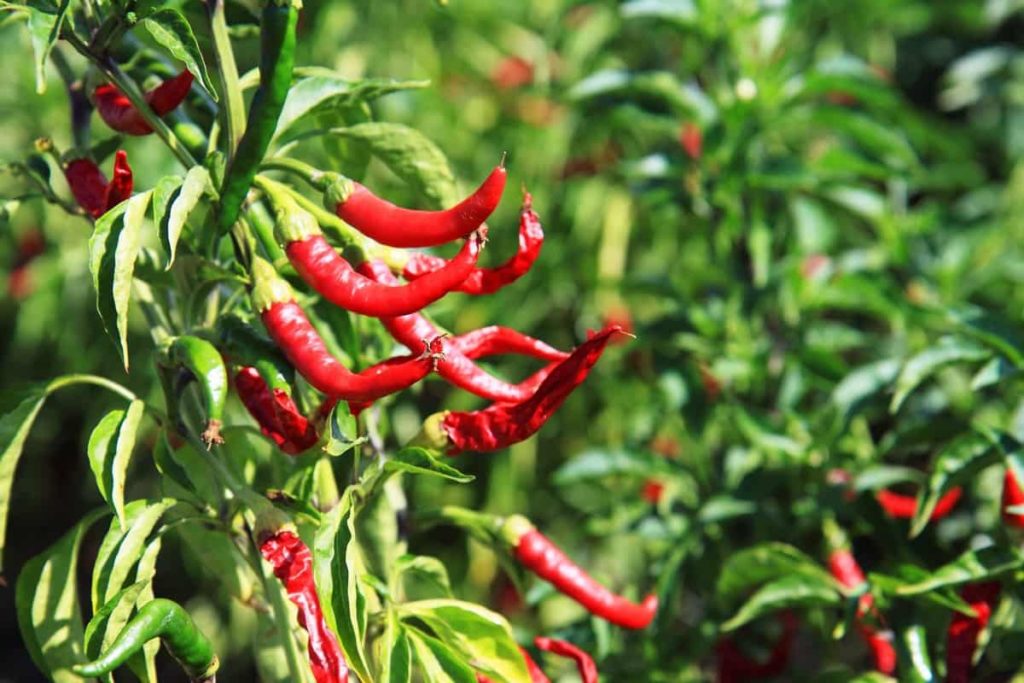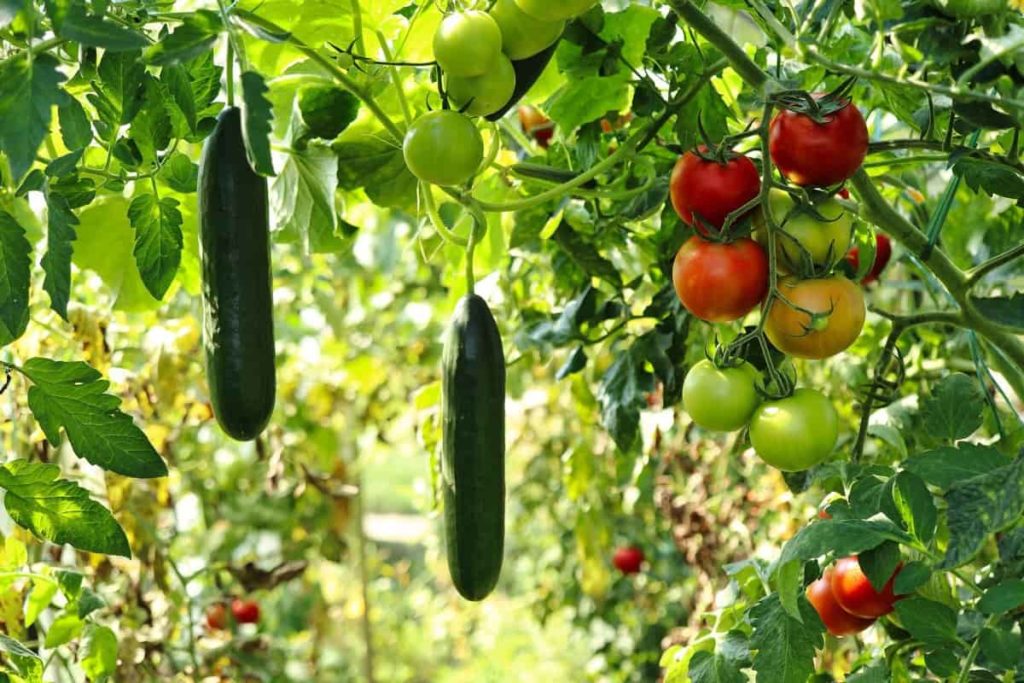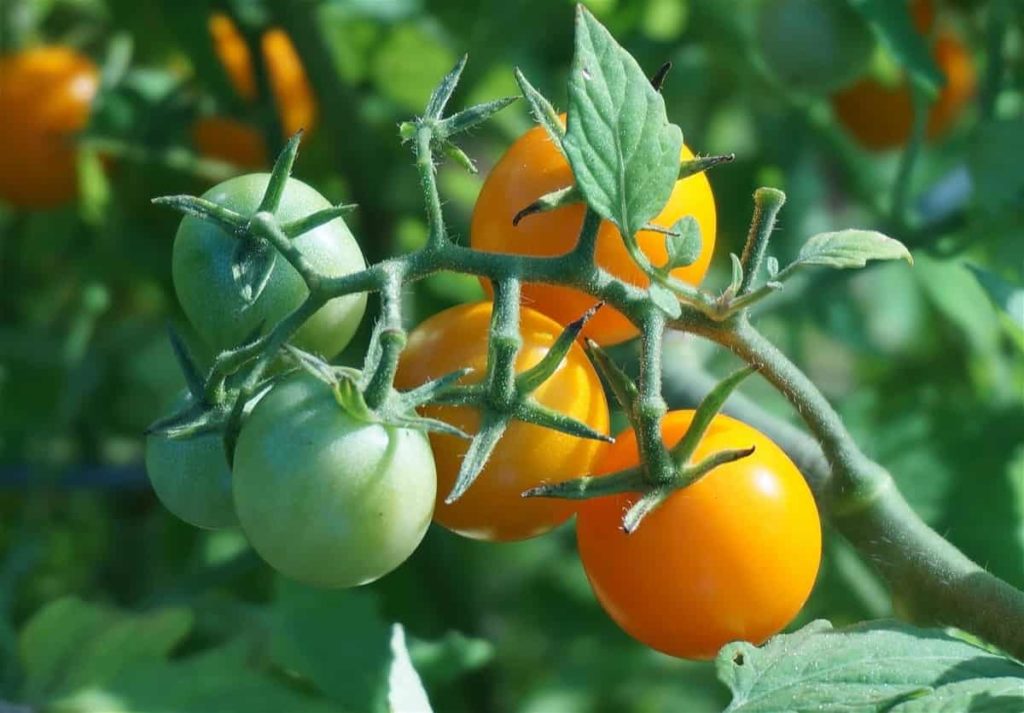A small or large city terrace is an excellent perk for those who live there. Space is becoming more congested and constrained in contemporary cities. Chennai is one of those cities in India. As time goes on, the total floor areas of modern high-rise apartment buildings and condominium complexes will continue to decrease. Many areas in Chennai, like Besant Nagar, Kotturpuram, Mylapore, Nungambakkam, and R.A Puram, are examples. And in these places, there is an increase in terrace gardening.

The terrace provides an opportunity to unwind and take it easy and is a real blessing. Follow these steps to build a garden on a terrace, excellent for individuals who like being outdoors and having plants around. Below we learn the disadvantages and advantages of terrace gardening, terrace garden setup steps, terrace garden setup cost in Chennai, how to start a terrace garden from scratch in Chennai/Tamil Nadu, and how to grow different fruits, vegetables, flowers, and herbs on the terraces of Chennai.
What are the advantages of terrace gardening?
Depending on the device’s design and size, self-maintenance can be possible. Watering, trimming, and other specifics are specific to each plant. Getting a professional gardener is no longer necessary. As a result of not having to pay someone else to do it, one saves money. If you sow seeds for veggies, can you regularly harvest your fruits and vegetables at home? As a result, the toxic chemical residue is reduced, which is good for the environment.
Traditional farming often overuses artificial fertilizers and pesticides. Therefore this chemical’s health concerns are minimized. Since one does not need to purchase plants or seeds from the market, it is more cost-effective. Money saved can be used to buy other things in the future. In addition, you save money on hiring a gardener since you won’t be paying someone else to perform work that you can do just as well on your own.
Having a terrace garden not only allows you to grow your vegetables and fruits but also improves the aesthetics of your home, especially if you have colorful flowers planted in it, making it look more beautiful than usual and requiring fewer repairs and replacements compared to traditional gardening. Resale value is essential when looking for a place since it can make a location more costly than others.
In case you missed it: How to Start a Terrace Garden From Scratch in Hyderabad: For Vegetables, Flowers, Herbs, and Fruits

For the convenience of one’s way of life, everyone prefers to live in a home where the environment is green and the means of transportation are readily available, whether by land, air, or water—adding a terrace garden to your property costs the same as buying it new. Many homes have gardens to raise the property’s value when it comes time to put it on the market.
What are the disadvantages of terrace gardening?
It has been observed that gusts of wind frequently cause the plants in the terrace garden to be blown away. You must be careful while planting the garden; otherwise, your money and work might be wasted. Roof gardens are an elaborate kind of roof landscaping, which results in a heavier overall roof structure.
A step-by-step guide on how to start a terrace garden from scratch in Chennai/Tamil Nadu
When to start a terrace garden in Chennai
January and July are ideal for beginning a terrace garden in Chennai. Before the rain starts falling, it is essential to do this so that the ground of the terrace and any new plants can acclimate to the environment.
Plan your terrace garden
Before starting a roof garden, ensure the roof can handle the weight of the soil, especially damp soil. Next, the roof must be water-proof to prevent water from seeping into the room below. When designing and creating a roof garden, it’s hard to create a natural environment. Climbers and trailers are very useful in roof gardens because of the restricted area available for gardening. Consequently, anybody interested in growing a rooftop garden should include more of these plants in their plans. A roof garden’s use of hanging baskets is equally critical.
Terrace garden setup cost in Chennai
An initial expenditure of Rs 10,000–15,000 is required to build up a terrace garden that is 500 square feet in size in Chennai. This includes the expense of fertilizers, which may be replaced with compost produced at home in some instances. Within the confines of this area, one has the potential to grow twelve various kinds of vegetables, about five different kinds of flowers, and the same number of different kinds of herb plants.
Schedule your time
Time is an essential component of any endeavor. But devoting a regular amount of time to gardening is an absolute need. Preparing a terrace gardening should take no more than an hour or two a day. When all the foundation work is finished, you will have just half an hour to an hour to tend to the plants. If you’re busy, spend 30 minutes in the morning and evening.
Consider temperature and sun exposure.
Although you can grow most of the essential veggies on your terrace, doing so in India’s diverse environment can be quite challenging, especially in Chennai. Compared to settings with lower average temperatures, tropical or high-humidity regions need a different kind of plant care than locations with lower average temperatures in Chennai.
Temperature is the most critical factor, in case you were unaware. Not all plants need direct sunshine. You should get familiar with the sun your young saplings need; those that wilt when exposed to direct sunlight are often protected from it by placing a net over them or keeping them in the shade.
Select your plants
It is essential to provide careful consideration and meticulous preparation for the plants on the terrace. The first thing that has to be chosen is whether or not the whole area will be paved or certain areas will be left aside for grass, beds, planting one or two specimen trees, and creepers for draping over the house. Terrace gardening begins with selecting appropriate plants. Taproot plants can damage your building’s structure. Thus, you must choose fibrous root plants.
In case you missed it: How to Start a Terrace Garden from Scratch in Mumbai: A Step-By-Step Guide for Beginners

Money plants, herbs, sunflowers, roses, orchids, and other hardy variants will perform well on Chennai terraces since they need little care due to their succulent and cactus ancestry. Other plants, such as sunflowers and roses, can also thrive on terraces. Choose plants with deep roots to get the most out of your container garden. As there are few ways for water to drain, the plants you’ve chosen don’t require much watering.
Gather the equipment
Investing in the appropriate gardening equipment is essential, regardless of the garden size you want to grow, whether it is a few potted plants on the balcony or a massive terrace plot. Watering cans, a hose, gloves, rakes, spades, pots, trowels, and other similar instruments are necessities for the job.
Waterproof your terrace
The first step in creating a terrace garden is to ensure that your terrace is watertight. It’s best to cover the whole terrace floor with a heavy tarp if you’re doing it yourself. Having a professional waterproof terrace is also an option. Make sure your foundation can withstand the added weight of the pots.
There should be no difficulties maintaining the additional weight in most circumstances if your home was constructed by experts using the proper ratio of sand and cement. If you don’t like the notion of tarpaulins, you can purchase pot saucers that can be used to collect water that drains from pots. Whichever option you choose, be sure your patio is watertight.
Prepare the soil
Grow robust and healthy plants by growing appropriately prepared and fed soil. Soil that has been chemically treated may hurt and even kill beneficial bacteria, worms, and other soil microorganisms and leach into the food chain. Locate a reliable supplier of soil. Nurseries often stock soil with vermicompost, compost coir, and composted soil, although this can be pricey. Make your compost and mix the soil yourself if you want a more affordable choice.
Get your containers
When it comes to arranging your plants, containers are essential. Aside from plastic bottles, you may use old paint boxes, wooden crates, or plastic bottles. It’s also worth contemplating whether or not to use hanging pots for certain creepers and blooming plants. All containers must have a small drainage hole at the bottom to drain excess water. Nonetheless, a little piece of flat stone should be used to fill up this small hole to prevent the soil from evaporating.
Planting the seeds in containers
You must remove everything unwanted and wasteful in the pot. After that, add some moisture to the soil that has been prepared. The soil shouldn’t have a lot of water in it. Before adding soil, a thin coating of sand is typically recommended to improve drainage. This is done to prevent the soil from becoming waterlogged. Take the time to read the seed packaging.
Seed packages often provide instructions on how to plant the seeds and how much space should be left between each seed. For further directions on the depth and distance at which your seeds should be planted, please refer to the seed packaging or get in touch with your seed source. The instructions on the seed packs will tell you when the optimum time is to plant the seeds in the pots if they are kept outside.
When you are through preparing the wick, insert the seeds in a container as it is shown on the seed packaging. Put the seeds through a smooth pressing or only cover them with a thin layer of the beginning mixture or humus. After the seeds have been transplanted, use a mister or a tiny spray of water to wet them. The seed starting or multi-top layer must be moist but not completely soaked in water. Remember that you should only add a little water at once. The seeds could move about if more water is added and become lost.
Water your terrace garden
Most plants rely on even moisture. However, allowing the soil to get somewhat dry before watering stimulates the development of the plant’s roots. If you water warm soil in the middle of the day, more of the water will evaporate than if you water more excellent soil in the evening or at night. In addition, the plants can gather enough water for themselves before the next day’s heat. When leaves become wet, they become more susceptible to disease.
When leaves are made moist and exposed to the sun, they generate tiny burn scars. If the leaves are allowed to remain moist overnight, diseases like leaf mold can develop. To ensure proper hydration, the water must penetrate deeply into the soil and reach the plant’s roots. Insufficient amounts of water often wet the surface of the soil. Because of the need for adequate watering, plants are especially reliant on the soil maintaining a consistent moisture level until their produce is ready to be harvested.
In case you missed it: How to Start a Terrace Garden from Scratch in Bangalore/Karnataka: for Vegetables, Flowers, Herbs, and Fruits

It takes some time for water to absorb into the ground. It is best to water the bed in sections often rather than all at once so valuable moisture does not escape unused. Constantly watering at the same root point will cause the roots to develop in a zigzag pattern, resulting in less nutrient uptake by the soil. Because of this, you should always water the region surrounding the plant and disperse the water across the whole watering area.
Make use of watering techniques that save water, such as drip watering systems. Because waterlogging prevents the roots from drawing oxygen from the surrounding soil, the root cells perish because they are deprived of oxygen. Plant soil abundant in clay minerals has superior expansion qualities, and as a result, it can more effectively and uniformly distribute water throughout the soil. Ensure enough water drainage throughout the rainy summers and winters to avoid waterlogging.
Manage pests and diseases in your terrace garden
For pest and disease management, you must begin by nurturing good soil. The potting mix should include neem cake, which is nutritious and protects the soil from pests. Keep pests and diseases at bay by preparing the potting mixture correctly and thoroughly. Inviting pests and diseases to your garden is a given if you grow the same crop year after year in the same container.
Please list what vegetables you want to grow and when, and then go ahead and plant them. To keep your garden space or container clean, you must also care for the instruments you use. Maintaining good hygiene will ensure you don’t inadvertently spread sickness or pests. Some plants, like the marigold and the chrysanthemum, have a natural deterrent impact on pests and diseases.
Flowers have aesthetic appeal and a built-in insecticide, so planting a row of them is a win-win situation. On the other hand, the border crop is what we name it because it attracts pests – oh, sure. Some bugs, as well as many insects, can be caught using traps. To produce a sticky paste, combine equal parts of hardwood sawdust, bran, molasses, and adequate water. Evenings are the best time to distribute the fertilizer.
Cutworms are attracted to the molasses and become trapped when they attempt to get through it. After the chemical dries out in the sun, it is no longer effective in killing the bug. Cutworms will die if they eat this bait, but there are many different traps you can set.
Install garden shades
Some plants cannot tolerate an excessive amount of sunlight, while others cannot tolerate an excessive amount of rain, either of which might cause harm to the plants and trees. You can use garden shades or covers to shield your plants and trees from the searing heat and heavy precipitation in your yard. You can install sunshades that are not heavy and protect from the sun’s rays. If you have a limited budget, mosquito nets or bamboo can be used as a cover for plants that need protection from sunlight.
Use the verticle space
Getting the most out of your terrace will be easier if you use the available area well. Plant climbs and shrubs near the walls and railings produce edible vegetables, such as beans, squashes, gourds, and tall tomatoes. You’ll save a lot of room if you support them in this manner, but they’ll also be able to develop horizontally and vertically.
Use existing shelves and racks to store pots and purchase pot holders to place around the room’s edges. You can grow herbs to improve the flavor of salads and other dishes by growing them in vertical areas, and you can grow many flowers to satiate ornamental view requirements.
In case you missed it: How to Start a Terrace Garden From Scratch in Delhi: For Vegetables, Flowers, Herbs, and Fruits

Be ready
Terrace gardening is a lot of fun since you play with soil, water, cow dongs, and kitchen scraps. Natural treatment is also one option. Make sure your hands are clean. Terrace gardens are no exception to the rule that failure is a necessary element of success. Overwatering your plants, coping with too much or too little manure, bugs, pests, and insufficient fruit and vegetable output are all possible reasons for failure. However, over time, you will be able to stand in a lovely garden thanks to your blunders.
A gardener’s job is to care for nature and to express their love and admiration for the plants and flowers under their care. But wait a minute, what happened? Bugs, pests, and animals can’t be completely prevented from eating your plants. There are occasions when you must remove an infected plant to prevent the spread of the disease to other plants, such as when your lovely rose tree or chilling tree becomes infested with infectious bacteria.
Losing a beautiful rose or a cool tree can be heart-breaking, but you must learn to manage your feelings and move on. Various online tools help maximize your terrace garden’s productivity, including articles, blogs, and videos. Over time, you’ll be able to improve and manage your garden.
Best vegetables for Chennai terraces
Tomatoes, okra, potatoes, brinjal, chilies, spinach, eggplants, cucumbers, and carrots are among the easy vegetables grown on the terraces of Chennai.
Best fruits for Chennai terraces
Watermelon, pineapples, pomegranate, lemons, guava, papaya, and other fruits can be grown easily on the terraces of Chennai.
Best flowers for Chennai terraces
Marigolds, hibiscus, roses, lilies, impatiens, zinnias, and petunias are among many flowers that can be grown on the terraces of Chennai.
In case you missed it: Best Season to Grow Cucumber at Home in India: In Pots, Terrace, Apartment Balcony, and Backyards

Best herbs for Chennai terraces
For Chennai terraces, herbs such as basil, mint, parsley, coriander, oregano, chives, etc., can be grown.
Conclusion
Get your resources together, put on your gardening gloves, and get ready to get your hands dirty as you create the ideal garden for your patio. The birds and animals who stop by can benefit from your generosity by tasting the delicious produce grown in your garden.
- Broccoli Seed Germination and Selection
- Asparagus Seed Germination and Variety Selection
- Seasonal Flower Gardening: Best Practices for Spring, Summer, Fall, and Winter
- How to Grow Hibiscus from Flower
- Plantation Ideas for Home Decoration: A Beginners Guide
- Flower Garden Designs and Layouts for Beginners
- Planting and Spacing Techniques in Papaya: A Beginner’s Guide
- Growing Gold: Essential Techniques for Planting Pineapples
- How to Make Kalanchoe Plant Bushy: Home Remedies and Solutions
- 11 Reasons Why Your Gardenia is Not Blooming: Home Remedies and Solutions
- Eco Elegance: The Guide to Designing a Drought-Tolerant Landscape
- Gardening on a Slope: Strategies for Hillside Landscaping
- Nourish and Flourish: Top Organic Mulches for Thriving House Plants
- Everything You Want to Know about Indian Mogra Flower: Discover Uses and Growing
- Green Thumb Success: Expert Tips for Cultivating Greenhouse Pumpkins All Year Round
- Maximize Growth & Flavor: The Ultimate Guide to Companion Planting in Herb Gardens
- How to Control Rhododendron Problems Naturally: Home Remedies and Organic Ways to Fix Them
- Natural Magic: The Remarkable Benefits of Cinnamon for Plants
- Best Steps to Revive Dying Tulip with Natural and Organic Treatment
- 10 Reasons Why Your Angel Trumpet is Not Blooming: Remedies and Treatment
- How to Fix Periwinkle Leaf and Flower-Related Problems: Natural Remedies and Solutions
- How to Fix Zinnias Leaf and Flower Problems: Discover Natural and Home Remedies
- Organic Steps to Induce Lemon Tree Flowers: A Comprehensive Guide
- Bloom Booster: Crafting the Perfect Homemade Bougainvillea Fertilizer
- Optimizing Growth: A Guide to Applying NPK Fertilizer for Potted Plants
- 10 Best Homemade Fertilizers for Rubber Plant: DIY Recipes and Application Method
- How to Boost Female Pumpkin Flowers: Effective Steps for More Flowers and High Yields
- Transform Your Indoor Garden: Top Benefits of Pink Salt for Houseplants
- 10 Best Homemade Fertilizers for Peacock Plants (Calathea): Easy DIY Guide
- Unlock Blooms: 9 Reasons Why Your Potted Chrysanthemum is Not Blooming
- 8 Reasons Why Your Potted Hibiscus is Not Blooming: Fix it with Simple Solutions
- Unlock Blooms: 9 Key Reasons Your Potted Frangipani Won’t Flower
- 10 Reasons Why Is My Ice Plant Not Blooming: Remedies and Treatment
- 10 Reasons Why My Potted Hydrangea Not Blooming: Treatment and Remedies
- 10 Reasons Why is My Wisteria Not Blooming: Remedies and Treatment
- 10 Reasons Why is My Goldfish Plant Not Blooming: Remedies and Treatment